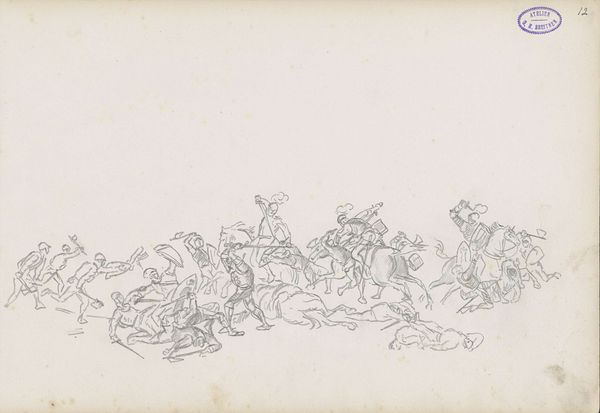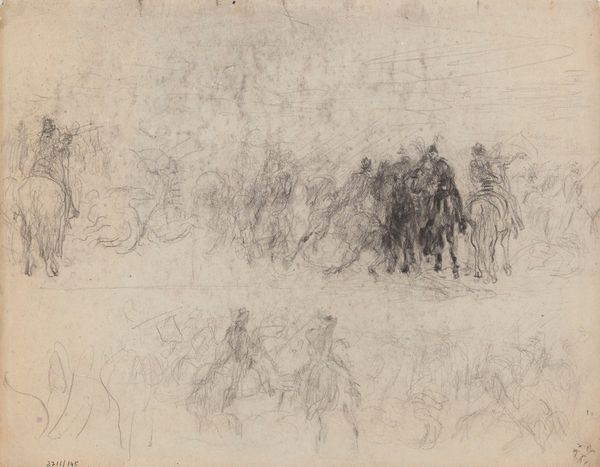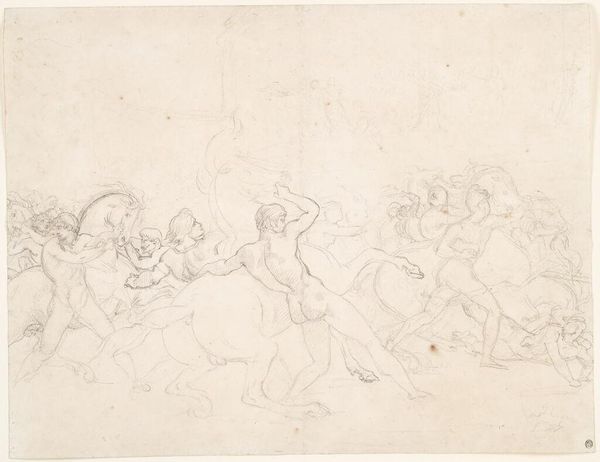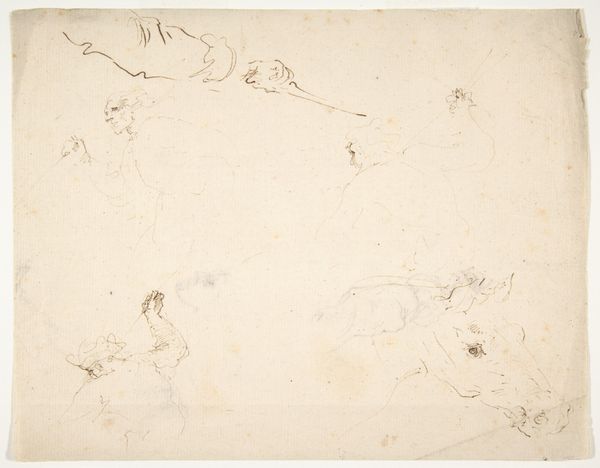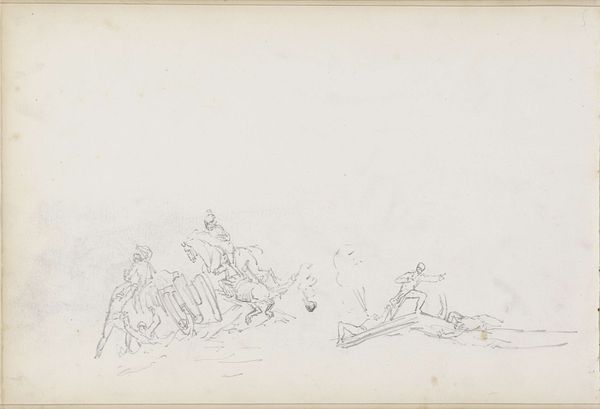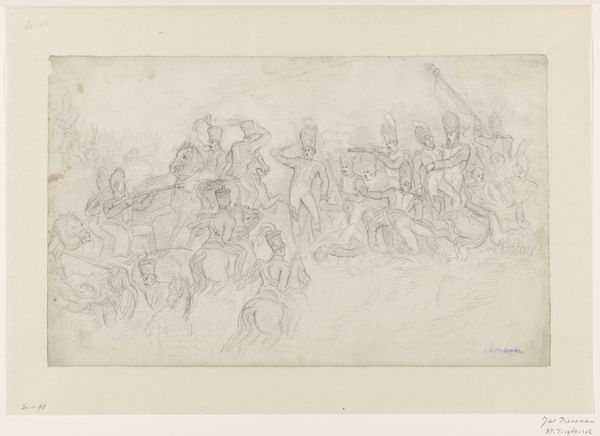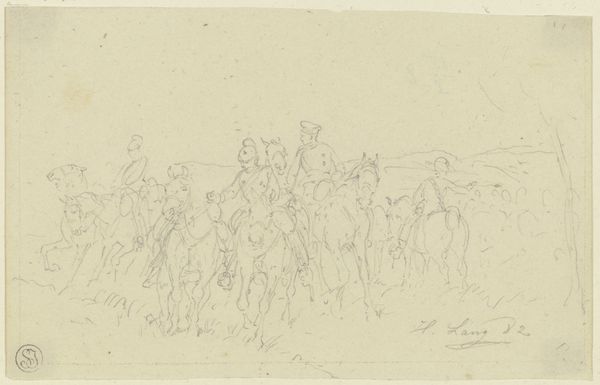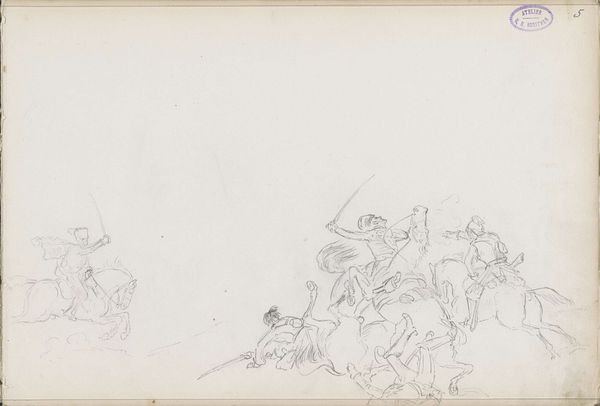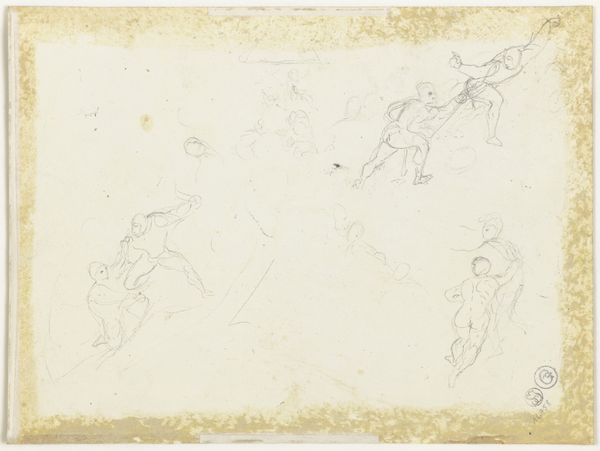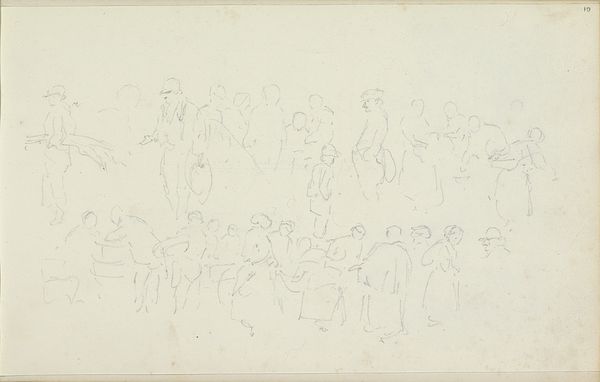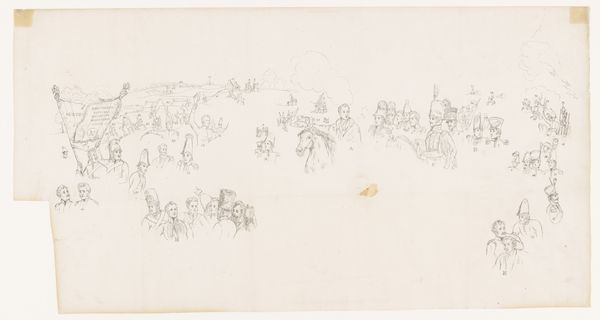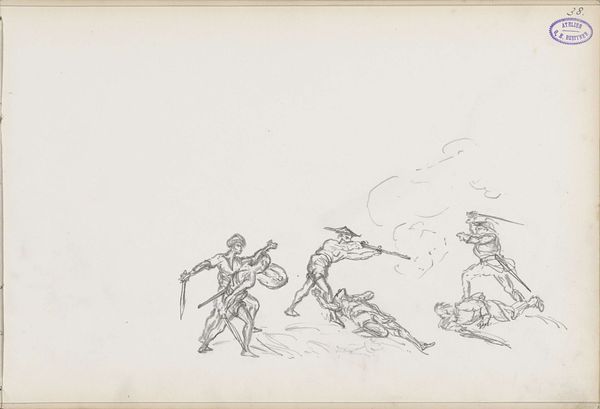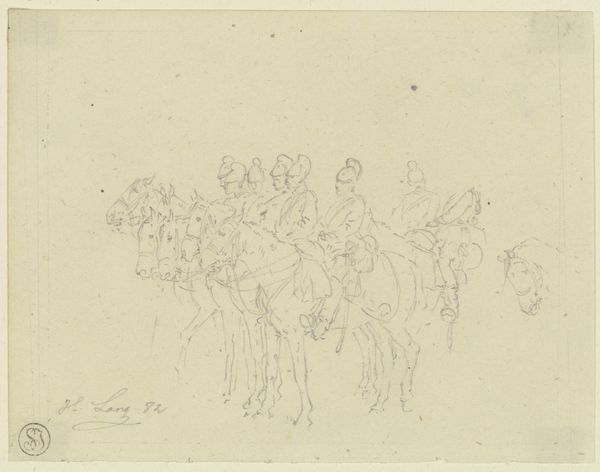
drawing, paper, ink, pencil
#
drawing
#
16_19th-century
#
landscape
#
figuration
#
paper
#
ink
#
romanticism
#
pencil
#
line
Copyright: Public Domain
Editor: This is Moritz von Schwind’s "Study sheet_ Elfin dance," a 19th-century ink and pencil drawing on paper, housed at the Städel Museum. The ethereal figures give it a light, almost whimsical feel. How do you interpret this work? Curator: Well, it’s crucial to understand this piece within the context of 19th-century Romanticism, a period deeply invested in folklore and the supernatural. These aren't just whimsical figures; they represent a longing for a pre-industrial, perhaps even pre-Christian, past, don’t you think? A world where humans existed in harmony with nature and its hidden, magical elements. Think about the rising industrialization and displacement of rural communities happening at the time. Editor: I see what you mean. So, the drawing could be viewed as a form of resistance, or at least, a yearning for an alternative way of life? Curator: Precisely! And let's consider who these figures are: elves. In many European traditions, elves are powerful, often ambivalent figures associated with marginalized communities. Could Schwind be hinting at anxieties surrounding shifting social hierarchies or repressed folk traditions? It encourages us to contemplate how folklore, especially within the framework of Romanticism, often became a space for expressing societal tensions indirectly. What purpose does it serve to focus on elfin dances, versus contemporary, more political subjects? Editor: It’s fascinating to consider the social implications embedded within this seemingly lighthearted drawing. I guess I hadn’t fully appreciated the layers of meaning woven into the romanticized depiction. Curator: Right. Art often speaks volumes through its subtext. This work prompts us to consider how artistic choices are inextricably linked to the cultural narratives and societal power dynamics of their time. Editor: This was insightful; thank you for unpacking its cultural and historical nuances. Curator: My pleasure. Art offers continuous critical reflection on how societies, past and present, understand themselves.
Comments
No comments
Be the first to comment and join the conversation on the ultimate creative platform.
